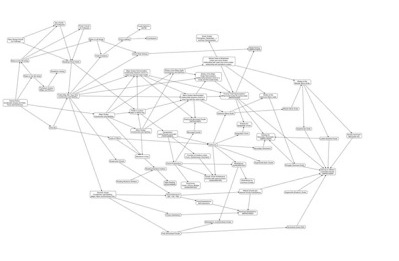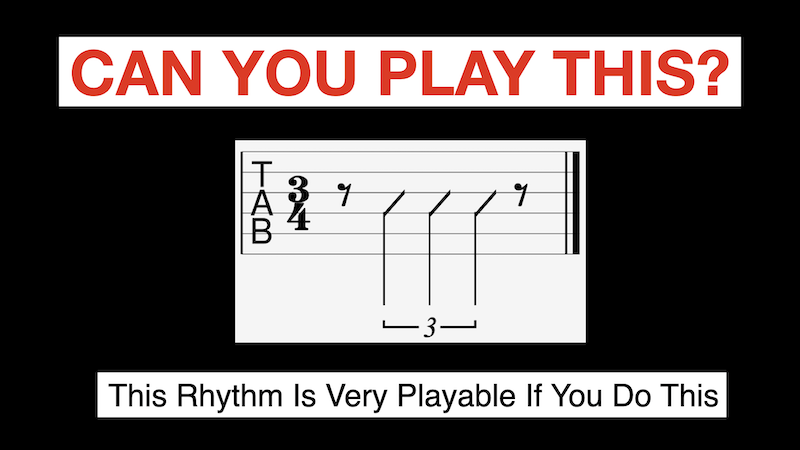OFFBEAT Triplets - This Rhythm Is Very Playable If You Do This


The offbeat quarter note triplet has a reputation for being nearly impossible to play—but today, we’re going to change that.
Recently, I came across a talented musician breaking it down using rhythmic expansion. While that method works for some, it can be tricky for others. That’s why I’m introducing an alternative approach—one that I believe is simpler and more intuitive.
This isn’t just another tutorial; it’s a clear, step-by-step guide to help you lock in this rhythm with confidence. No complex theory required—just a practical way to feel exactly where each note falls in relation to the beat.
By the end of this lesson, you’ll not only understand the offbeat quarter note triplet, but you’ll be able to use it in your own playing right away. Watch the video below, follow along, and expand your rhythmic vocabulary. Let’s get started!
video transcript
Step 1
When working with a difficult rhythm like this, the best place to start is to find a subdivision that clearly shows when things will fall on or off a beat. We want lots of subdivisions. For this one, we will start with a 16th-note triplet feel.
For complex rhythms I prefer to use the Konnakol counting system. We're using triplets. In Konnakol, the syllables for a group of three are Ta Ki Ta. There is a group of three on the downbeat and the +. Let's clap this rhythm.

Step 2
The next step you want to take to move towards playing an offbeat quarter note triplet rhythm is to place an 8th triplet on the + of 1. To get the 8th note triplet we need to play every other note of the 16th note triplet. With Konnakol you can sub in a grouping of two (Ta Ka) for those syllables. The 16th note triplet pulse stays consistent throughout this rhythm. Only clap the Ta of the Ta Ka’s. Let’s clap this rhythm.

Step 3
For step three, you do not clap the 16th note triplets. We will replace those with rests. You still say the syllables to help keep the spacing, but you will only clap the Ta’s of the Ta Ka’s for this exercise. Now we are starting a triplet on the + of 1. Once this feels comfortable, you can stop saying the extra syllables, but you must feel the underlying 16th note subdivision to perform this rhythm. Let’s clap this rhythm.

Step 4
Let’s move one step closer to playing the offbeat quarter note triplet. For this step we will expand the rhythm to a measure of
3/4. We will add a second group of 8th note triplets starting on the + of 2. We will only clap the Ta in each group of 2 (Ta Ka). We will also go back to clapping the Ta Ki Ta’s.

Step 5
In this step we will finally get to the quarter note triplet rhythm. To get there replace the Ta Ka’s (group of 2) with Ta Ka Di Me (group of 4). We will keep the 16th triplet pulse the same in all of these exercises while we change the syllables we say over them. We will clap the Ta Ki Tas and only the Ta in each Ta Ka Di Me group for this one. Let’s clap this rhythm.

Step 6
For the last step, you only clap the Ta’s at the beginning of each group Ta Ka Di Me. You can still say all the other syllables to keep the spacing. If you do this enough times, you will be able to feel the spacing of this rhythm. You can also take this same approach and work on starting this rhythm on the + of other beats. Let’s clap this very playable offbeat quarter note triplet rhythm.+6

Final Thoughts
What we covered today is just the first step in learning any rhythm. Now, if you want to learn how to master any rhythm and explore innovative ways to apply it creatively, I encourage you to check out my course, Ultimate Rhythm Mastery.
This isn't just another guitar book; it's a comprehensive video course designed to transform your playing. From foundational concepts to advanced rhythms, like those covered in today's video, I'll personally guide you through a proven system that builds your rhythmic confidence step by step.
What makes this course different is that every lesson is designed for you to apply it to your guitar playing immediately. You get clear hands-on demonstrations of each concept, progressive exercise that builds your skills naturally, practical applications that can be used in any style of music, and deep dives into time signatures and creative rhythmic patterns, A structured practice system that ensures you see results.
No more struggling with abstract rhythm concepts. With Ultimate Rhythm Mastery, you'll develop real musical skills you can use immediately.
Click the link below to get started today.